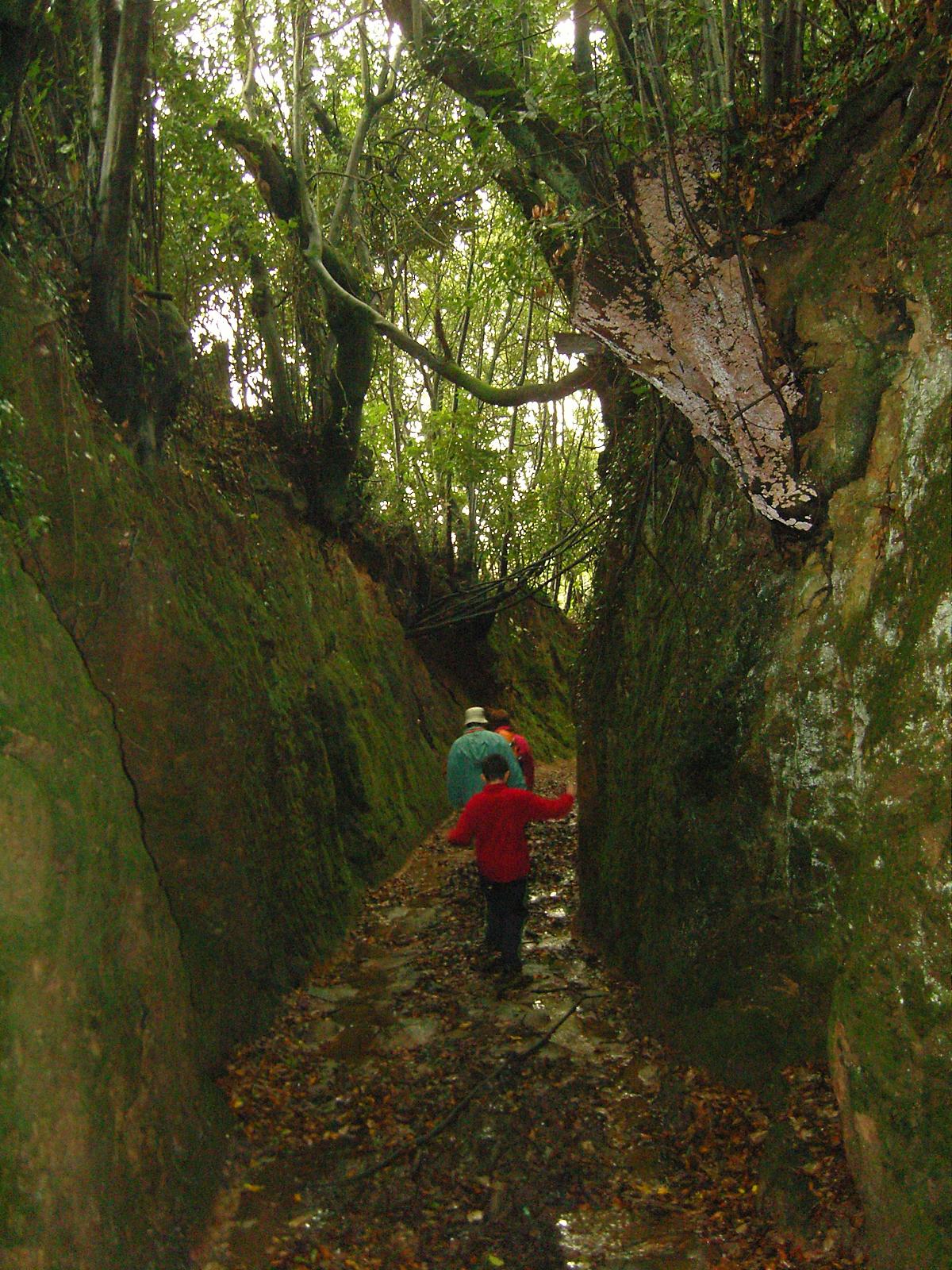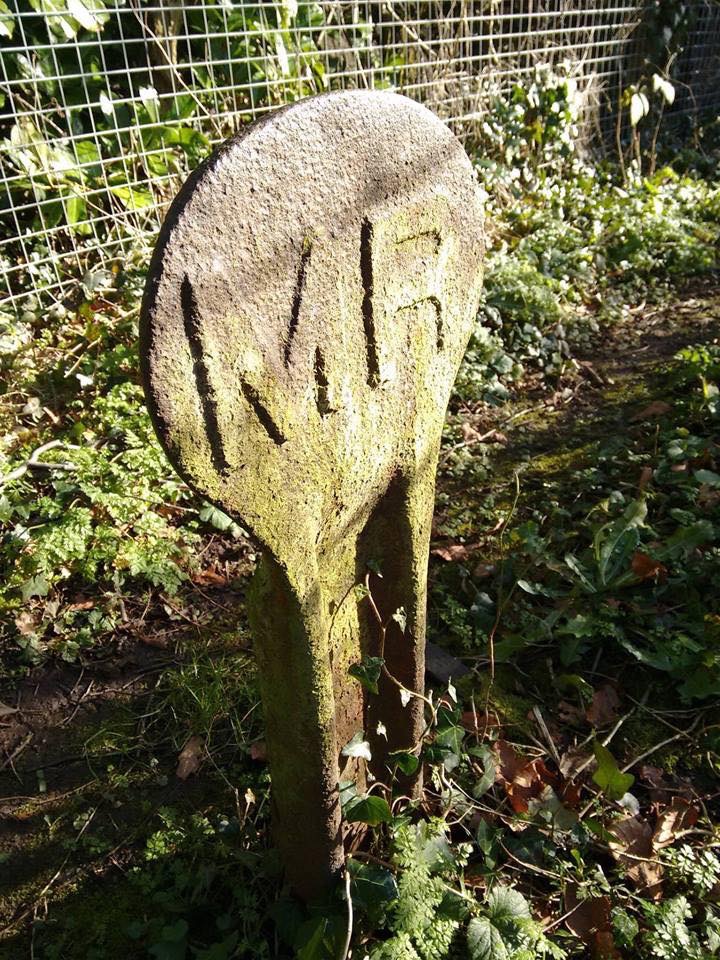|
Bittesby
Bittesby is a deserted village and former civil parish, now in the parish of Bitteswell with Bittesby, in the Harborough district of Leicestershire, England. It is near the A5 Watling Street, about three miles from Lutterworth. The site of the village was adjacent to the route of the now disused Midland Railway. According to the 2001 census the parish had a population of 6. The name 'Bittesby' means 'farm/settlement of Byttel'. Bittesby was recorded in the Domesday Book as having 25 families resident. The village was depopulated in 1494. Hollow ways and house platforms remain on the site today. To the north of the site is an area of faced stonework, indicating the site of a chapel. The deserted medieval village of Bittesby was identified in 1945 by Maurice Beresford. It is a scheduled ancient monument. Bittesby was formerly a liberty Liberty is the state of being free within society from oppressive restrictions imposed by authority on one's way of life, behavior, or ... [...More Info...] [...Related Items...] OR: [Wikipedia] [Google] [Baidu] |
Bitteswell With Bittesby
Bitteswell is a small village and former civil parish, now in the parish of Bitteswell with Bittesby, in the Harborough district of Leicestershire in England. It is situated just north of the town of Lutterworth, and in the 2001 census had a population of 454 (including Magna Park). The population had increased to 554 at the 2011 census. It was recorded in the Domesday Book as Betmeswelle. The village's name means 'the spring/stream in the broad valley'. History The village contains two thatched houses and a number of Georgian dwellings alongside modern houses. Population figures have not altered much since records began in 1801 with a population of 398 was recorded as against around 380 today. In 1841 there was a big increase caused by the building of Bitteswell Hall, north of the village. This brought employment and new families as it had its own farms, gas installation etc., but in the 1920s it was demolished, the land and buildings split up. The village also had its own ai ... [...More Info...] [...Related Items...] OR: [Wikipedia] [Google] [Baidu] |
Harborough District
Harborough () is a local government district in Leicestershire, England. It is named after its main town, Market Harborough, which is where the council is based. The district also includes the town of Lutterworth and numerous villages and surrounding rural areas. In the north of the district it includes parts of the Leicester Urban Area, notably at Thurnby, Bushby and Scraptoft. Covering , the district is the largest by area of the eight districts in Leicestershire and covers almost a quarter of the county. The neighbouring districts are Blaby, Oadby and Wigston, Leicester, Charnwood, Melton, Rutland, North Northamptonshire, West Northamptonshire and Rugby. History The district was created on 1 April 1974 under the Local Government Act 1972, covering the area of four former districts, which were all abolished at the same time: * Billesdon Rural District * Lutterworth Rural District * Market Harborough Rural District *Market Harborough Urban District The new council was n ... [...More Info...] [...Related Items...] OR: [Wikipedia] [Google] [Baidu] |
Maurice Beresford
Maurice Warwick Beresford, (6 February 1920 – 15 December 2005) was an English economic historian and archaeologist specialising in the medieval period. He was Professor of Economic History at the University of Leeds. Early life and education Beresford was born on 6 February 1920 in Sutton Coldfield, then in Warwickshire.Glasscock, ''The Independent'', 2006 He was the only child of Harry Bertram Beresford and Nora Elizabeth Beresford ( Jefferies). His father died in 1934, aged 46, and Maurice's mother continued to live with him until her death in 1966, aged 79. From 1930 to 1938, Beresford was educated at Bishop Vesey's Grammar School, a state grammar school in Sutton Coldfield. While there, he was enthused by two teachers, one a history master and the other from geography. He was successful at school, becoming a prefect, school librarian and editor of the school newspaper. In 1937, Beresford sat a joint entrance exam in history for six of the University of Cambridge's coll ... [...More Info...] [...Related Items...] OR: [Wikipedia] [Google] [Baidu] |
Deserted Medieval Villages In Leicestershire
{{disambig ...
Deserted may refer to: *Desertion, the act of abandoning or withdrawing support from an entity to which one has given. This most commonly refers to a military desertion. * ''Deserted'' (film), a 2016 film *"Deserted", a song by Blind Melon from their 1992 album ''Blind Melon'' *''Deserted'', a 2019 album by the Mekons The Mekons are a British Post-punk band formed in 1976 as an art collective. They are one of the longest-running and most prolific of the first-wave British punk rock bands. The band's style has evolved over time to incorporate aspects of co ... [...More Info...] [...Related Items...] OR: [Wikipedia] [Google] [Baidu] |
Liberty (division)
A liberty was an Kingdom of England, English geographic unit originating in the Middle Ages, traditionally defined as an area in which Jura regalia, regalian right was revoked and where the land was held by a mesne lord (i.e., an area in which rights reserved to the king had been devolution, devolved into private hands). It later became a unit of History of local government in England, local government administration. Liberties were areas of widely variable extent which were independent of the usual system of Hundred (country subdivision), hundreds and boroughs for a number of different reasons, usually to do with peculiarities of land tenure, tenure. Because of their tenurial rather than geographical origin, the areas covered by liberties could either be widely scattered across a county or limited to an area smaller than a single parish: an example of the former is Fordington (liberty), Fordington Liberty, and of the latter, the Waybayouse Liberty, Liberty of Waybayouse, both in D ... [...More Info...] [...Related Items...] OR: [Wikipedia] [Google] [Baidu] |
Scheduled Ancient Monument
In the United Kingdom, a scheduled monument is a nationally important archaeological site or historic building, given protection against unauthorised change. The various pieces of legislation that legally protect heritage assets from damage, visual disturbance, and destruction are grouped under the term " designation". The protection provided to scheduled monuments is given under the Ancient Monuments and Archaeological Areas Act 1979, which is a different law from that used for listed buildings (which fall within the town and country planning system). A heritage asset is a part of the historic environment that is valued because of its historic, archaeological, architectural or artistic interest. Only some of these are judged to be important enough to have extra legal protection through designation. There are about 20,000 scheduled monuments in England representing about 37,000 heritage assets. Of the tens of thousands of scheduled monuments in the UK, most are inconspicuous arch ... [...More Info...] [...Related Items...] OR: [Wikipedia] [Google] [Baidu] |
Sunken Lane
A sunken lane (also hollow way or holloway) is a road or track that is significantly lower than the land on either side, not formed by the (recent) engineering of a road cutting but possibly of much greater age. Holloways may have been formed in various ways, including erosion by water or traffic; the digging of embankments to assist with the herding of livestock; and the digging of double banks to mark the boundaries of estates. Means of formation A variety of theories have been proposed for the origins of holloways. Different mechanisms may well apply in different cases. Erosion Some sunken lanes are created incrementally by erosion, by water and traffic. Some are ancient, with evidence of Roman or Iron Age origins, but others such as the Deep Hill Ruts in the old Oregon Trail at Guernsey, Wyoming, developed in the space of a decade or two. Where ancient trackways have lapsed from use, the overgrown and shallow marks of hollow ways through forest may be the sole evidence ... [...More Info...] [...Related Items...] OR: [Wikipedia] [Google] [Baidu] |
Deserted Medieval Village
In the United Kingdom, a deserted medieval village (DMV) is a former settlement which was abandoned during the Middle Ages, typically leaving no trace apart from earthworks or cropmarks. If there are fewer than three inhabited houses the convention is to regard the site as deserted; if there are more than three houses, it is regarded as a shrunken medieval village. There are estimated to be more than 3,000 DMVs in England alone. Other deserted settlements Not all sites are medieval: villages reduced in size or disappeared over a long period, from as early as Anglo-Saxon times to as late as the 1960s, due to numerous different causes. Reasons for desertion Over the centuries, settlements have been deserted as a result of natural events, such as rivers changing course or silting up, flooding (especially during the wet 13th and 14th centuries) as well as coastal and estuarine erosion or being overwhelmed by windblown sand. Many were thought to have been abandoned due to the ... [...More Info...] [...Related Items...] OR: [Wikipedia] [Google] [Baidu] |
Domesday Book
Domesday Book ( ; the Middle English spelling of "Doomsday Book") is a manuscript record of the Great Survey of much of England and parts of Wales completed in 1086 at the behest of William the Conqueror. The manuscript was originally known by the Latin name , meaning "Book of Winchester, Hampshire, Winchester", where it was originally kept in the royal treasury. The ''Anglo-Saxon Chronicle'' states that in 1085 the king sent his agents to survey every shire in England, to list his holdings and dues owed to him. Written in Medieval Latin, it was Scribal abbreviation, highly abbreviated and included some vernacular native terms without Latin equivalents. The survey's main purpose was to record the annual value of every piece of landed property to its lord, and the resources in land, labour force, and livestock from which the value derived. The name "Domesday Book" came into use in the 12th century. Richard FitzNeal wrote in the ( 1179) that the book was so called because its de ... [...More Info...] [...Related Items...] OR: [Wikipedia] [Google] [Baidu] |
Midland Railway
The Midland Railway (MR) was a railway company in the United Kingdom from 1844 in rail transport, 1844. The Midland was one of the largest railway companies in Britain in the early 20th century, and the largest employer in Derby, where it had its headquarters. It amalgamated with several other railways to create the London, Midland and Scottish Railway at Railways Act 1921, grouping in 1923. The Midland had a large network of lines emanating from Derby, stretching to St Pancras railway station, London St Pancras, Manchester Central railway station, Manchester, Carlisle railway station, Carlisle, Birmingham Curzon Street railway station (1838–1966), Birmingham, and Bristol Temple Meads railway station, Bristol. It expanded as much through acquisitions as by building its own lines. It also operated ships from Heysham in Lancashire to Douglas, Isle of Man, Douglas and Belfast. A large amount of the Midland's infrastructure remains in use and visible, such as the Midland Main Lin ... [...More Info...] [...Related Items...] OR: [Wikipedia] [Google] [Baidu] |



